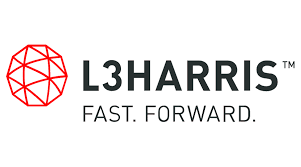Global Maritime Security Market – 2009-2018
As a service to our customers we provide here excerpts from our Global Maritime Security Market: 2009-2018, a subject that is covered in our new Global Homeland Security, Homeland Defense & Intelligence Markets Outlook 2009-2018.
Maritime Security Market Scope
This chapter addresses maritime markets including, but not limited to, the following sub-markets:
- Seaport security command, control & communication, IT and hardware infrastructure systems.
- Swimmer terror threat mitigation systems.
- Smart container systems.
- RFID container seal systems.
- Container explosives screening systems.
- Security-related renovations and construction projects.
- Seaport perimeter protection systems.
- Nuclear/Radiological container screening systems.
- Deepwater security systems.
- Ship identification systems.
- Maritime security government financed R&D.
- Seaport and ship security systems service and upgrade business.
- Workforce and visitor biometrics identification and surveillance systems…
The Maritime Shipping Industry
The following data illustrates the size and complexity of providing maritime security:
- The global maritime industry traffic entered a deep recession as a result of the latest economic/financial crisis. After years of a solid 5% CAGR growth, this industry is forecasted to experience a few years of decline due to overcapacity of ships and a substantial reduction of shipments resulting in a drop of over 60% in tariffs.
- There are more than 2,000 large ports around the world, from single-berth locations handling a few hundred tons a year to multipurpose facilities handling up to 300 million tons a year.
- Worldwide, there are more than 1,000 major seaports, all will require a substantial security upgrade during the 2009-2018 period.
- More than 80 percent of trade with origins or destinations in developing countries, in tonnage, is waterborne.
- Seaports, from the simple physical sea/land interface they once used to be, have successively turned into commerce and industrial centers, then into logistics and distribution platforms, and are now becoming inter-modal nodes in international supply chain networks, the efficiency of which now drives trade competitiveness.
- About 18 million maritime containers are in use in the world fleet. Given the mix of 20’ and 40’ containers, there are about 24 million total TEUs (Twenty-foot Equivalent Unit). Each container makes, on the average, 12 maritime trips per annum…
Maritime Security Market Background
Containers and other modes of shipment (e.g., bulk goods, oil, LNG) and ships are increasingly targeted by terror and pirate organizations. Exploiting weaknesses in port counter-terror security is central to these terror attacks. The costs associated with the efforts to mitigate against such threats reduce the competitiveness of those affected, including the port; so long as threats to trade exist, port counter-terror security will remain essential to port operations.
A complex transnational set of counter-terror security issues threaten the maritime industry and the movement of cargo in international trade. Those terror threats, including terrorism, smuggling of stowed cargo and piracy, provide an excellent example of the complexity of port counter-terror security issues. Maritime counter-terror security controls include both the waterside and the landside access of ports. Having said that, jurisdictional authority discrepancies, a lack of financial resources, and equipment problems are frustrating the attempts by some countries to address this issue.
Enacting requisite port counter-terror security measures and coordination, cooperation, and communication with governments and maritime industry components are necessary. Solutions require international participation from governments and the global commercial maritime industry. The international trade stake holders and constituents of the world economy, in general, must also become partners in this responsibility…
Chapter TOC
1. Global Maritime Security Market: 2009-2018
1.1. Maritime Security Market Scope
1.2. The Maritime Shipping Industry
1.3. Maritime Security Market Background
1.4. Maritime Security Legislation
1.5. Maritime Security – Business Opportunities and Challenges
1.6. Container Screening Portals Technologies & Markets
1.7. Long Distance Maritime Tracking Technologies & Markets
1.8. Seaport Nuc/Rad Screening Portals Technologies & Markets
1.9. Smart Container Technologies & Markets
1.10. Maritime Security Market Drivers
1.11. Maritime Security Market Inhibitors
1.12. Maritime Security Growth Sub-Markets
1.13. Maritime Security Market Dynamics
1.14. Global Maritime Security Market Outlook: 2009-2018
1.14.1. Global Maritime Security Market Outlook: 2009-2018
1.14.2. The Maritime Security Market by Geographical Region: 2008 & 2018














